
Chrysophyllum cainito - Plant
(MRP Inclusive of all taxes)
- Shipping ₹79 for entire order
- Dispatch in 7 days
- Country of origin: India

(MRP Inclusive of all taxes)
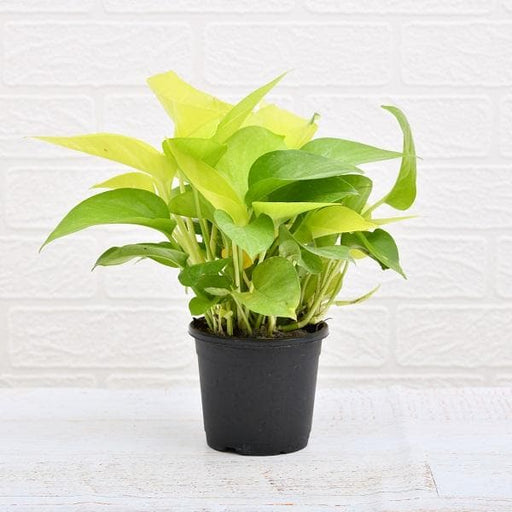 Save 29%
Save 29%
Air Purifier Money Plant with Pot The Air Purifier Money Plant, also known as Pothos or Epipremnum aureum, is a stunning indoor plant that...
View full details
 Save up to 15%
Save up to 15%
Peace Lily, Spathiphyllum - Plant The Peace Lily, scientifically known as Spathiphyllum, is a stunning houseplant celebrated for its elegant white...
View full details
 Save 25%
Save 25%
Jasminum sambac, Mogra, Arabian Jasmine - Plant Jasminum sambac, commonly known as Mogra or Arabian Jasmine, is a fragrant flowering plant...
View full details
 Save 18%
Save 18%
Combo Constituents Includes the Parijat Tree (Night-Flowering Jasmine), a culturally significant plant with fragrant flowers. Description The Pari...
View full details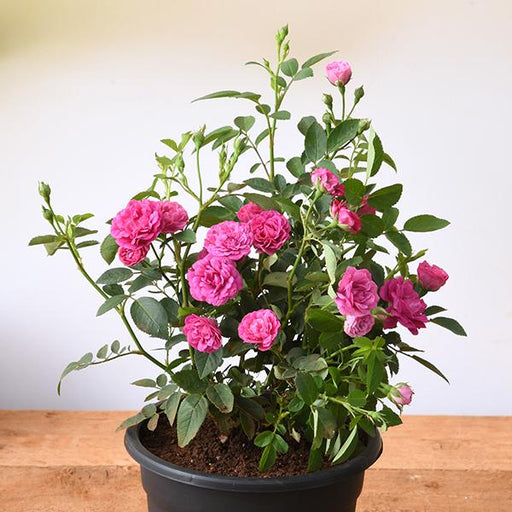
 Save 25%
Save 25%
Miniature Rose, Button Rose (Any Color) - Plant The Miniature Rose, also known as the Button Rose, is a charming and compact flowering plant that ...
View full details Save 25%
Save 25%
Damascus Rose, Scented Rose (Any Color) - Plant The Damascus Rose, also known as Rosa damascena, is a timeless symbol of beauty and romanc...
View full details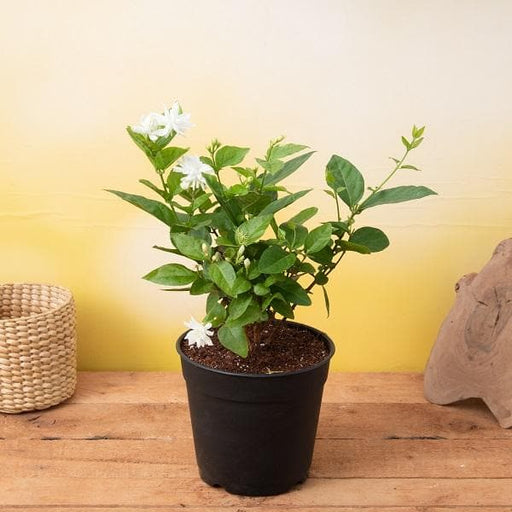
 Save 17%
Save 17%
Beautiful Fragrant Mogra, Arabian Jasmine Plant with Pot The Beautiful Fragrant Mogra, also known as Arabian Jasmine (Jasminum sambac), is...
View full details Save 15%
Save 15%
Pack of Vermicompost and Neem Cake for House Plants Transform your indoor garden with our premium Pack of Vermicompost and Neem Cake, spec...
View full details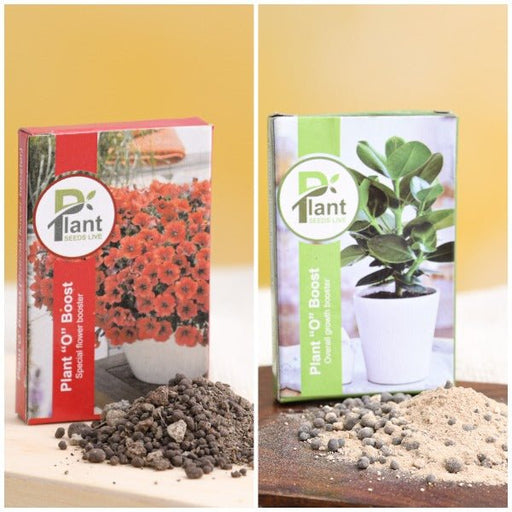
Pack of Plant Growth and Flower Boosters Unlock the full potential of your garden with our Pack of Plant Growth and Flower Boosters! This ...
View full details Save 38%
Save 38%
Combo of Jeevamrut and Neem Raksha for Easy Growth and Protection of Houseplants Transform your indoor garden with our exclusive combo of ...
View full details Save 22%
Save 22%
Plant Nutrients Kit (Pack of 16) for a Healthy Garden Transform your garden into a lush paradise with our Plant Nutrients Kit, featuring 1...
View full details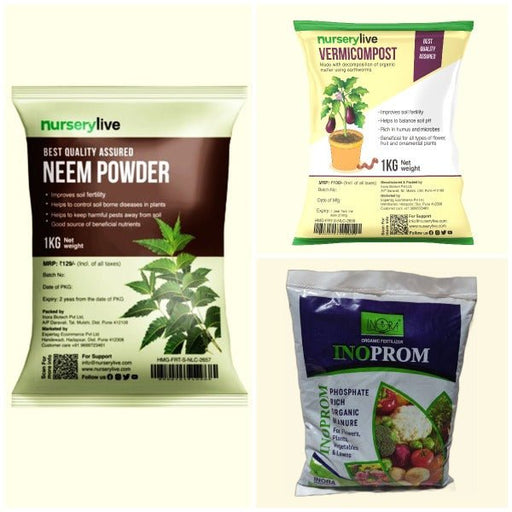 Save 16%
Save 16%
Combo of Top Plant Fertilizers Elevate your gardening game with our exclusive Combo of Top Plant Fertilizers, featuring two bags of premiu...
View full details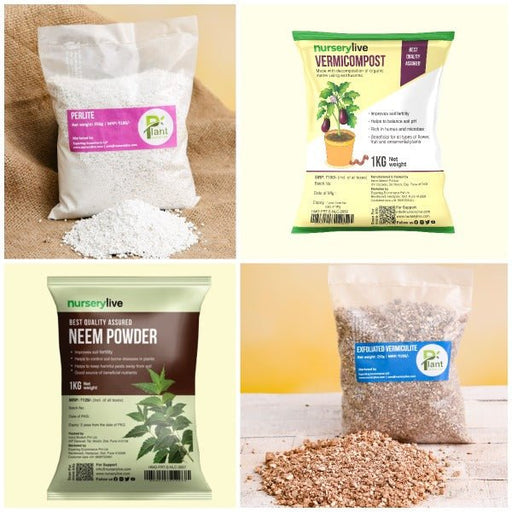 Save 24%
Save 24%
Pack of 4 Additives to Make Soil Healthy and Nutrient Rich Transform your garden into a thriving ecosystem with our Pack of 4 Additives de...
View full details Save 30%
Save 30%
Transform your gardening experience with our premium Combo of Perlite and Vermiculite. This unique blend is designed to enhance soil aeration and ...
View full details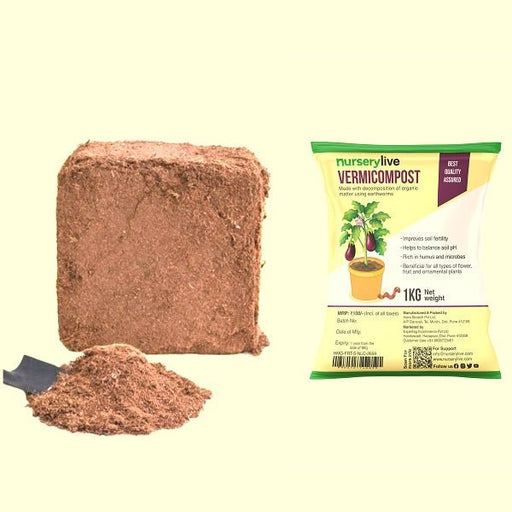 Save 27%
Save 27%
Combo of 2 Vermicompost and Cocopeat - Enrich Your Soil Naturally! Transform your garden into a thriving ecosystem with our Combo of 2 Ver...
View full details
 Save 35%
Save 35%
Best 6 Plants for Perfect Indoor Garden Transform your living space into a lush oasis with our curated collection of the Best 6 Plants for a...
View full details
 Save up to 50%
Save up to 50%
Mini Succulent Garden Pack Transform your space with our Mini Succulent Garden Pack, featuring a delightful collection of 4 any variety beautiful s...
View full details
 Save 30%
Save 30%
5 Best Fragrant Plants Transform your garden or indoor space into a fragrant paradise with our curated selection of the 5 Best Fragrant Plants. Th...
View full details
 Save 24%
Save 24%
Set of 2 Bonsai Looking Grafted Adeniums Transform your indoor or outdoor space with our exquisite Set of 2 Bonsai Looking Grafted Adenium...
View full details Save 45%
Save 45%
Top 4 Die Hard Succulents Pack Transform your indoor or outdoor space with our Top 4 Die Hard Succulents Pack, featuring a curated selecti...
View full details
 Save 30%
Save 30%
5 Best Indoor Plants Pack Transform your living space into a lush oasis with our '5 Best Indoor Plants Pack.' This carefully curated collection fe...
View full details
 Save 25%
Save 25%
Set of 4 Evergreen Air Purifier Plant Pack Transform your indoor space into a lush, green oasis with our Set of 4 Evergreen Air Purifier Pla...
View full details| SrNo | Item Name |
|---|---|
| 1 | Chrysophyllum cainito - Plant |
The Chrysophyllum cainito, commonly known as the Star Apple, is a tropical fruit tree native to the Caribbean and Central America. This evergreen tree can grow up to 30 feet tall and produces round, purple or green fruits with a sweet, creamy pulp. The unique star-shaped pattern inside the fruit makes it visually appealing and a delightful treat for fruit lovers. With its lush foliage and attractive appearance, the Star Apple is not only a source of delicious fruit but also a stunning addition to any garden.
What makes the Star Apple special is its rich nutritional profile, packed with vitamins A and C, calcium, and iron. The fruit is not only delicious but also offers numerous health benefits, including antioxidant properties and digestive support. Additionally, the tree is known for its resilience and adaptability to various soil types, making it a favorite among gardeners and horticulturists.
One of the standout features of the Chrysophyllum cainito is its unique fruiting pattern. The fruit can be harvested when it is still firm, allowing for a longer shelf life. The tree also provides shade and habitat for various wildlife, contributing positively to the local ecosystem.
The Star Apple tree plays a vital role in its ecosystem by providing food and shelter for various bird species and insects. Its ability to thrive in diverse soil conditions makes it an excellent choice for reforestation projects and sustainable agriculture. By planting Chrysophyllum cainito, you contribute to biodiversity and promote a healthier environment.
If you’re looking for a tree that’s not just a pretty face, look no further than the Chrysophyllum cainito, or as the cool kids call it, the star apple tree. This botanical wonder is packed with benefits, from its deliciously sweet fruit to its ability to provide shade on a hot summer day. Imagine lounging under its broad leaves, sipping a smoothie made from its juicy fruit. Talk about a tropical paradise! Plus, it’s a natural air purifier, so you can breathe easy while enjoying your fruity feast.
Caring for your Chrysophyllum cainito is like nurturing a diva; it requires attention but rewards you handsomely. This tree loves well-drained soil and a sunny spot to strut its stuff. Water it regularly, but don’t drown it—this isn’t a swimming pool party! Pruning is essential to keep it looking fabulous and to encourage fruit production. With a little TLC, your star apple tree will be the envy of the neighborhood.
The fruit of the Chrysophyllum cainito is like nature’s candy, sweet and succulent with a hint of mystery. When you slice it open, you’ll find a creamy, custard-like interior that’s simply irresistible. It’s perfect for snacking, smoothies, or even as a topping for desserts. Just be careful not to eat the seeds; they’re not as sweet as the fruit! This tropical delight is not just tasty; it’s also packed with vitamins and antioxidants, making it a guilt-free indulgence.
Propagating your own Chrysophyllum cainito is like starting a family tree, literally! You can grow new trees from seeds or cuttings, but patience is key. Seeds can take a while to germinate, so don’t be surprised if you feel like a parent waiting for a child to graduate. Cuttings are a quicker route, but they require the right conditions to thrive. With a little love and care, you’ll soon have a mini orchard of star apple trees to show off.
Every tree has its foes, and the Chrysophyllum cainito is no exception. Watch out for pesky pests like aphids and scale insects that might try to crash your tree’s party. These little invaders can sap the life out of your beloved plant, but fear not! A good spray of insecticidal soap or neem oil can send them packing. Keep an eye on your tree, and it’ll stay healthy and happy, ready to produce its delicious fruit.
The uses of Chrysophyllum cainito extend beyond just being a fruit-bearing tree. Its wood is durable and can be used for furniture, while its leaves can be brewed into a tea that’s said to have medicinal properties. Talk about a multitasker! Whether you’re looking to furnish your home or brew a soothing cup of tea, this tree has got you covered. Plus, it adds a touch of tropical flair to your garden, making it a true all-rounder.
If you’re considering adding a Chrysophyllum cainito to your garden, you’ll want to check your climate. This tropical beauty thrives in warm, humid conditions, so if you live in a colder area, you might need to bring it indoors during winter. It’s like a diva that demands the right environment to shine! Ideally, it prefers temperatures between 60°F and 100°F. If you can provide that, you’ll be rewarded with a stunning tree and delicious fruit.
The soil for your Chrysophyllum cainito should be well-draining and rich in organic matter. Think of it as the tree’s five-star hotel; it deserves the best! A mix of loamy soil with compost will keep your tree happy and thriving. Avoid heavy clay soils that retain too much water, as they can lead to root rot. With the right soil, your star apple tree will flourish and reward you with its luscious fruit.
Harvesting Chrysophyllum cainito is like a treasure hunt; you never know when you’ll find the perfect fruit! The key is to wait until the fruit turns a lovely shade of purple or greenish-yellow and feels slightly soft to the touch. Gently twist or cut the fruit from the tree, and voilà! You’ve struck gold. Just remember, patience is a virtue; picking too early can lead to a less-than-sweet experience.
The nutritional profile of Chrysophyllum cainito is as impressive as its taste. Packed with vitamins A and C, fiber, and antioxidants, this fruit is a powerhouse of health benefits. It’s like a little nutritional superhero, swooping in to boost your immune system and keep your skin glowing. So, the next time you indulge in this tropical treat, know that you’re not just satisfying your sweet tooth; you’re also doing your body a favor.
When it comes to landscaping, the Chrysophyllum cainito is the showstopper you didn’t know you needed. Its lush foliage and striking fruit make it a stunning focal point in any garden. Whether you’re creating a tropical oasis or just want to add some flair to your yard, this tree will elevate your landscape game. Plus, it provides shade and attracts birds, making your garden a lively retreat. Who knew landscaping could be this much fun?
Chrysophyllum cainito, also known as the star apple, is a tropical fruit tree that’s as sweet as its name suggests. With glossy leaves and a star-shaped fruit, it’s like nature’s own little treasure chest. Perfect for those who want to impress their friends with exotic fruits and a touch of botanical flair!
This tropical diva thrives in warm, humid climates, primarily found in regions like the Caribbean, Central America, and parts of Southeast Asia. If you’re dreaming of growing one, make sure your backyard feels like a tropical paradise—sunny, warm, and with a hint of adventure!
Caring for this beauty is a breeze! Provide well-draining soil, regular watering, and a sunny spot to bask in. Fertilize during the growing season, and watch out for pests—because even star apples need a bodyguard now and then. With a little love, you’ll have a fruit-bearing friend in no time!
Imagine biting into a creamy, sweet fruit that dances between a pear and a grape. That’s the star apple for you! Its unique flavor profile is a delightful surprise, making it a favorite for fruit salads, smoothies, or just a cheeky snack. Who knew tropical fruits could be so charming
Patience is a virtue, especially with Chrysophyllum cainito! Typically, it takes about 3 to 5 years after planting to start producing fruit. But once it does, you’ll be rewarded with a bounty of star-shaped delights. So, grab a chair, sit back, and let the fruit party begin!
While it prefers the great outdoors, you can attempt to grow Chrysophyllum cainito indoors if you have a sunny spot and a large enough pot. Just remember, it’s a tropical tree at heart, so it might throw a tantrum if it doesn’t get enough light. Indoor gardening just got a bit more exotic!
Absolutely! Propagating this star apple can be done through seeds or grafting. Just remember, seeds may take a while to germinate, so patience is key. If you’re feeling adventurous, grafting can give you a head start on fruit production. It’s like giving your plant a VIP pass to the fruit club!
Talk about a win-win!
Harvesting is as easy as pie! Wait until the fruit turns a lovely purple or green, then gently twist it off the branch. Be careful not to bruise your precious cargo—after all, you want to enjoy that sweet, creamy goodness without any battle scars. Happy harvesting!
Like any diva, Chrysophyllum cainito can attract a few unwanted guests, such as aphids, scale, and mealybugs. Keep an eye out and treat them with insecticidal soap or neem oil. A little pest control goes a long way in keeping your star apple healthy and thriving!
The skin of Chrysophyllum cainito is edible but can be a bit tough and not as tasty as the creamy flesh inside. If you’re feeling adventurous, give it a try, but most people prefer to dig right into the sweet, luscious interior. After all, who wants to waste time on tough skin
Chrysophyllum cainito loves a tropical climate with temperatures between 60°F and 100°F. It thrives in humidity and well-drained soil, so think of it as the ultimate sunbather. If you live in a cooler area, consider container gardening to bring a slice of the tropics to your backyard!